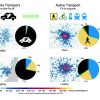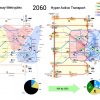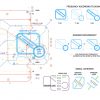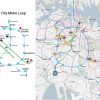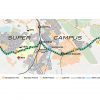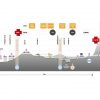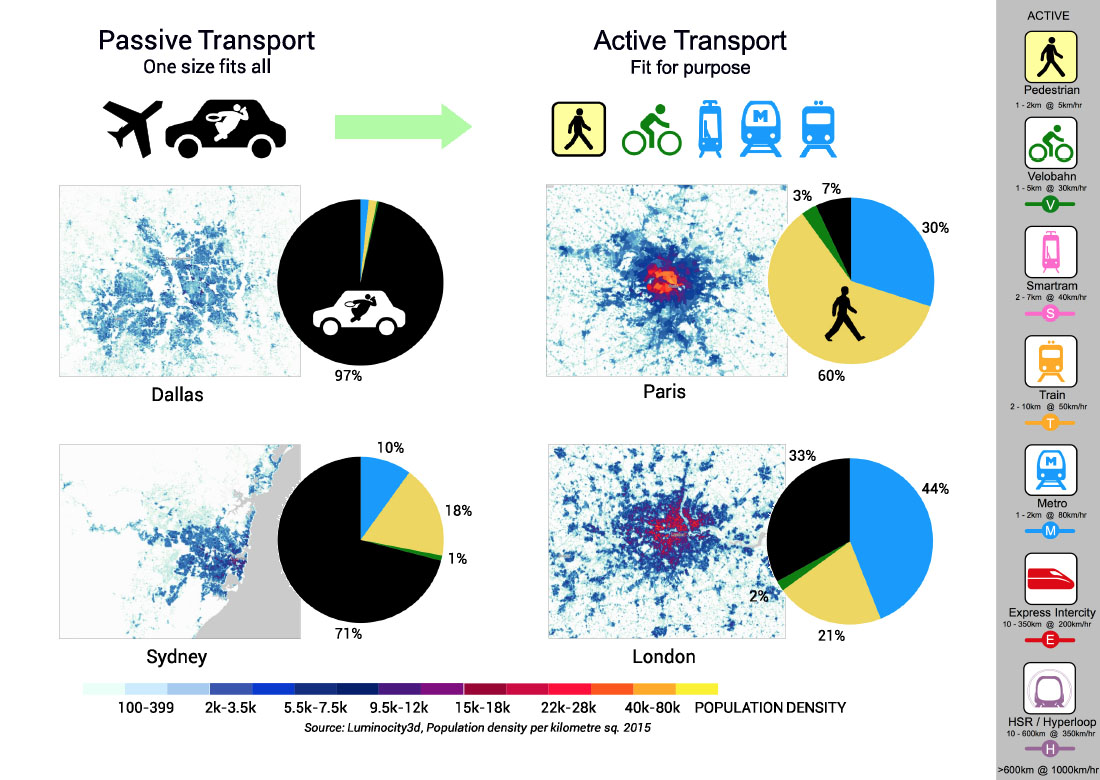 Passive Transport diffuses density while Active Transport promotes density within cities
Passive Transport diffuses density while Active Transport promotes density within cities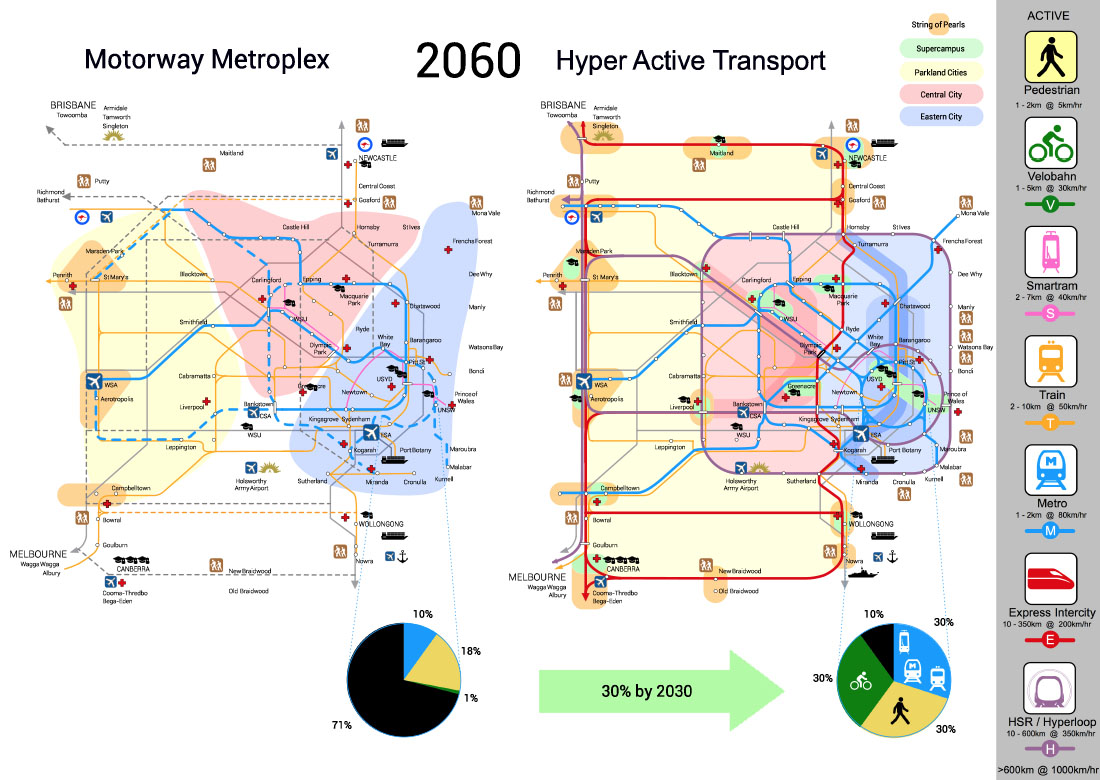 Hyper Active Transport (HAT) expands on the Motorway Metroplex 3 City Concept for Sydney
Hyper Active Transport (HAT) expands on the Motorway Metroplex 3 City Concept for Sydney Hyper Active Transport's hybrid metro loop
Hyper Active Transport's hybrid metro loop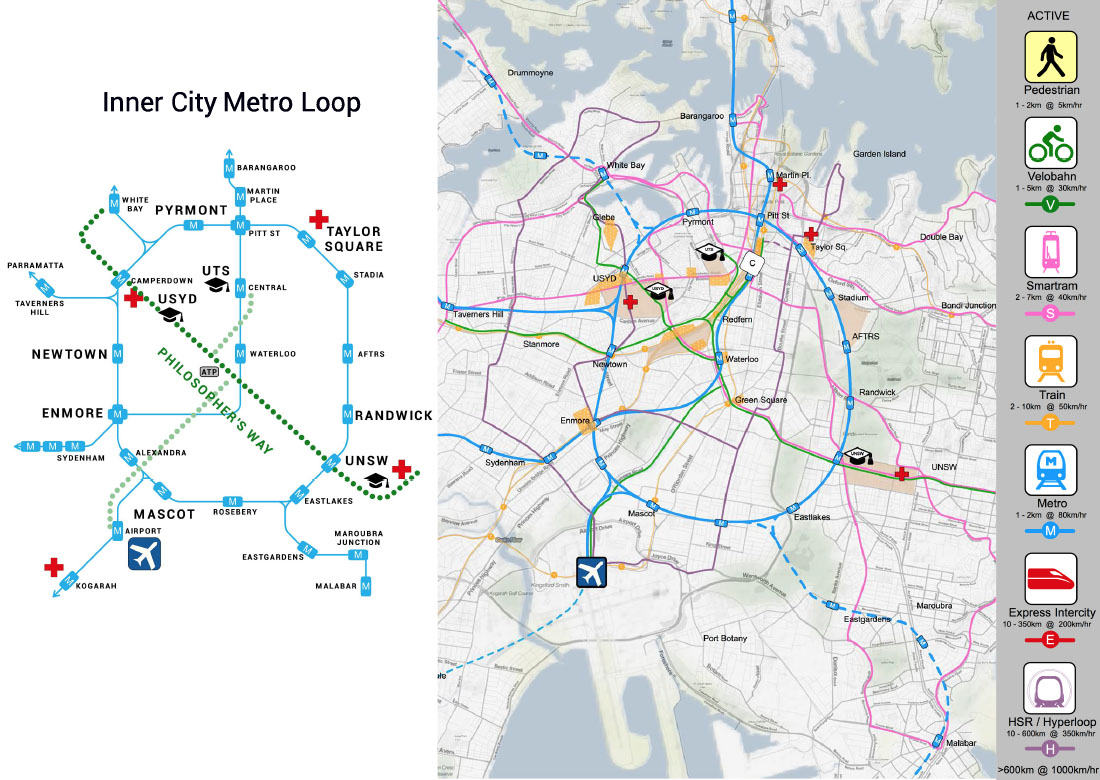 Hyper Active Transport extends Metro West to create an Inner City Metro Loop
Hyper Active Transport extends Metro West to create an Inner City Metro Loop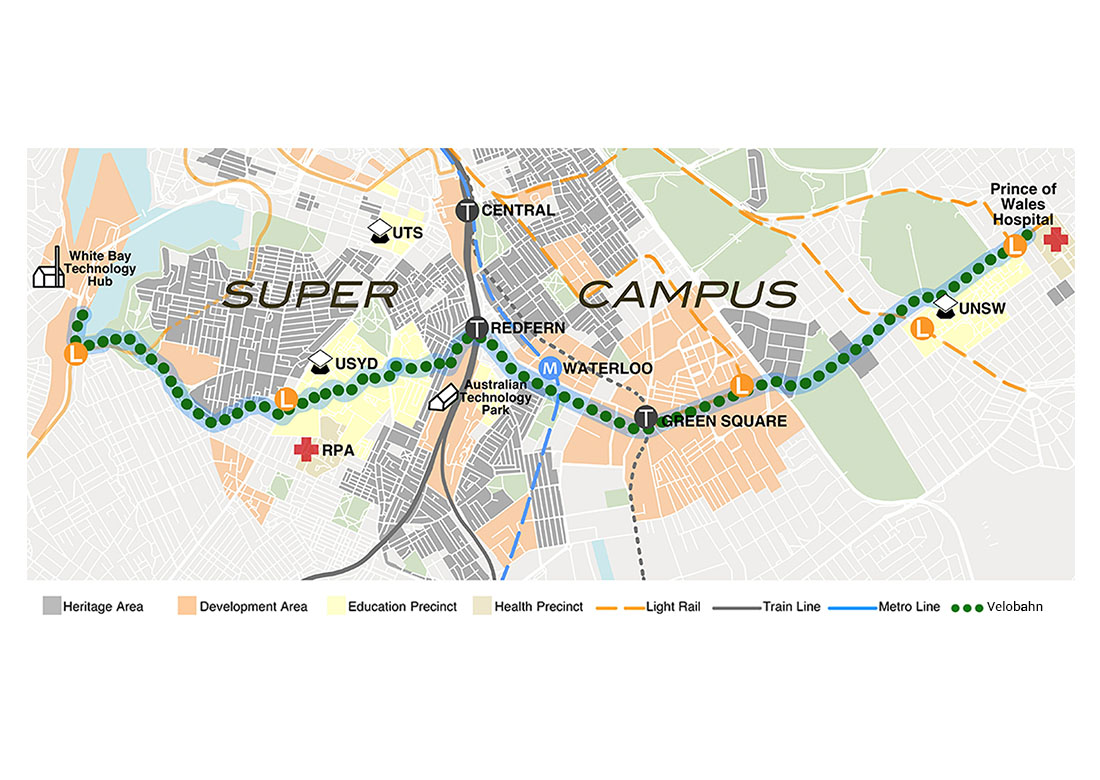 Velobahn - Bay to Beach
Velobahn - Bay to Beach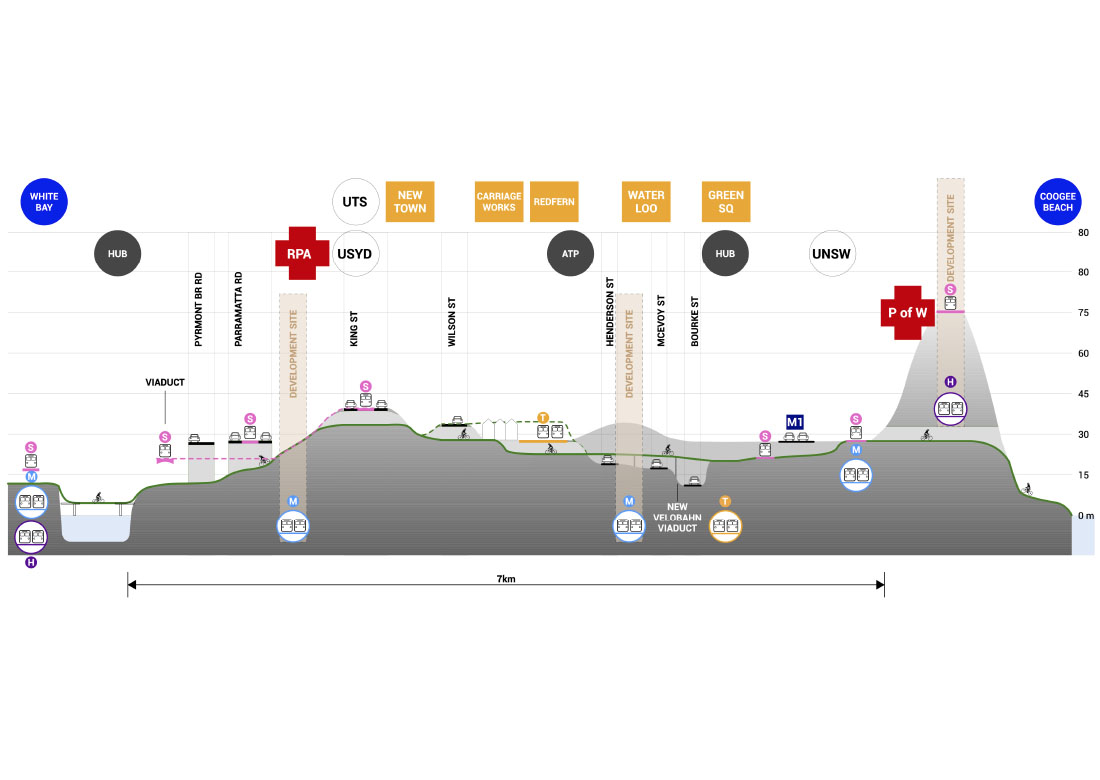 Bay to Beach Velobahn tunnels through and bridges over Sydney's topography
Bay to Beach Velobahn tunnels through and bridges over Sydney's topography Velobahn atop the Central rail corridor moving commuters from Ashfield to the CBD
Velobahn atop the Central rail corridor moving commuters from Ashfield to the CBD
Hyper Active Transport
Hyper Active Transport
Featured in the shortlisted entry to the Australian Urban Design Awards 2016
Featured in the shortlisted entry to the Australian Urban Design Awards 2017
Policies, Programs and Concepts
Large Scale
With the growth of our city and an obligation to use less energy, retasking Sydney’s mobility mix is critical. Looking to the world’s cities, a correlation can be made between energy use, population spread and mobility. These cities can be broadly redefined into two transport types:
– Passive Transport City: car centric cities with a “one size fits all” approach, created by large motorway monopolies. Typically these are lower density cities with larger footprints. E.g. Dallas and Sydney.
– Active Transport City: mass transit cities with a “fit for purpose” approach, that allow you to get out of the car and into a freer choice of transport modes. Because this takes up much less space than cars, these cities tend to be more consolidated and energy efficient. E.g. Paris and London.
The answer to Sydney’s congestion is Hyper Active Transport, or HAT for short. As mentioned before Active Transport is any energy efficient mode that reduces the reliance on cars and planes particularly in urban areas. Hyper Active Transport expands on this idea as different modes are used to create slow, short distance transport connections within pedestrian centres combined with fast, long distance transport connections between pedestrianised centres.
In Sydney’s city centre, a HAT system can tweak Metro West into an Inner City metro loop similar in size to Paris and London’s circle lines. Sydney’s hybrid metro loops will provide for underserviced areas and stitch together rips in the urban and social fabric. Velobahns and Smartrams will reactivate the streets and reduce the need for cars and parking, connect universities to form Supercampuses, and compensate for the loss of the extensive tram network that used to service Sydney. By returning use of public space to the pedestrian Sydney’s streets can be revitalised as Hyper Active Streets or HAS for short.
Despite the challenges of pursuing this, the benefits of HAT are enormous. At a regional scale, HAT will remove congestion from our cities and redefine what liveability means for Sydney. At a global scale HAT, when tailored to each specific city, responds to our need to reduce energy use and manage the world’s growing population. This designed mobility is the key to making density liveable and sustainable.
